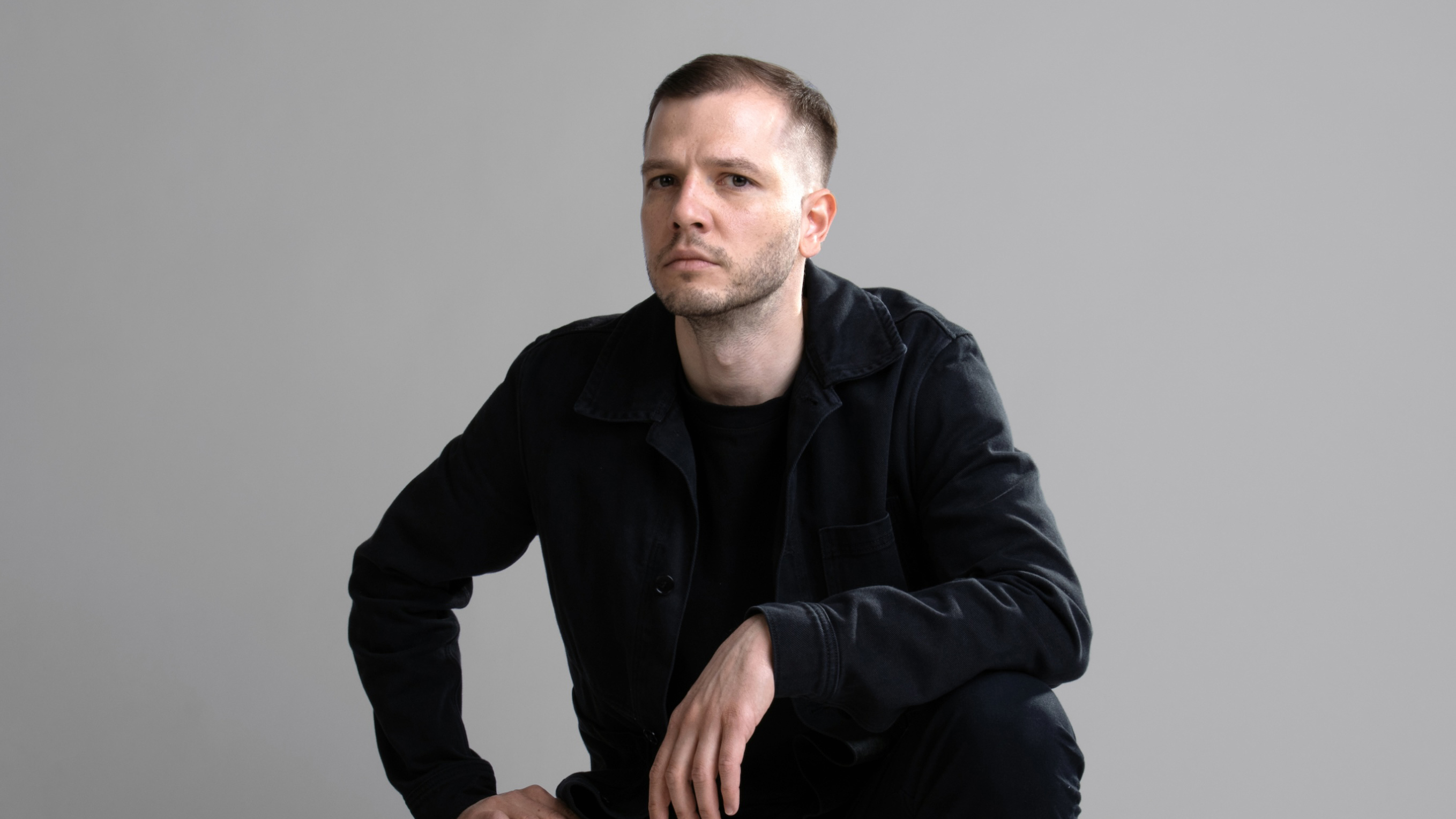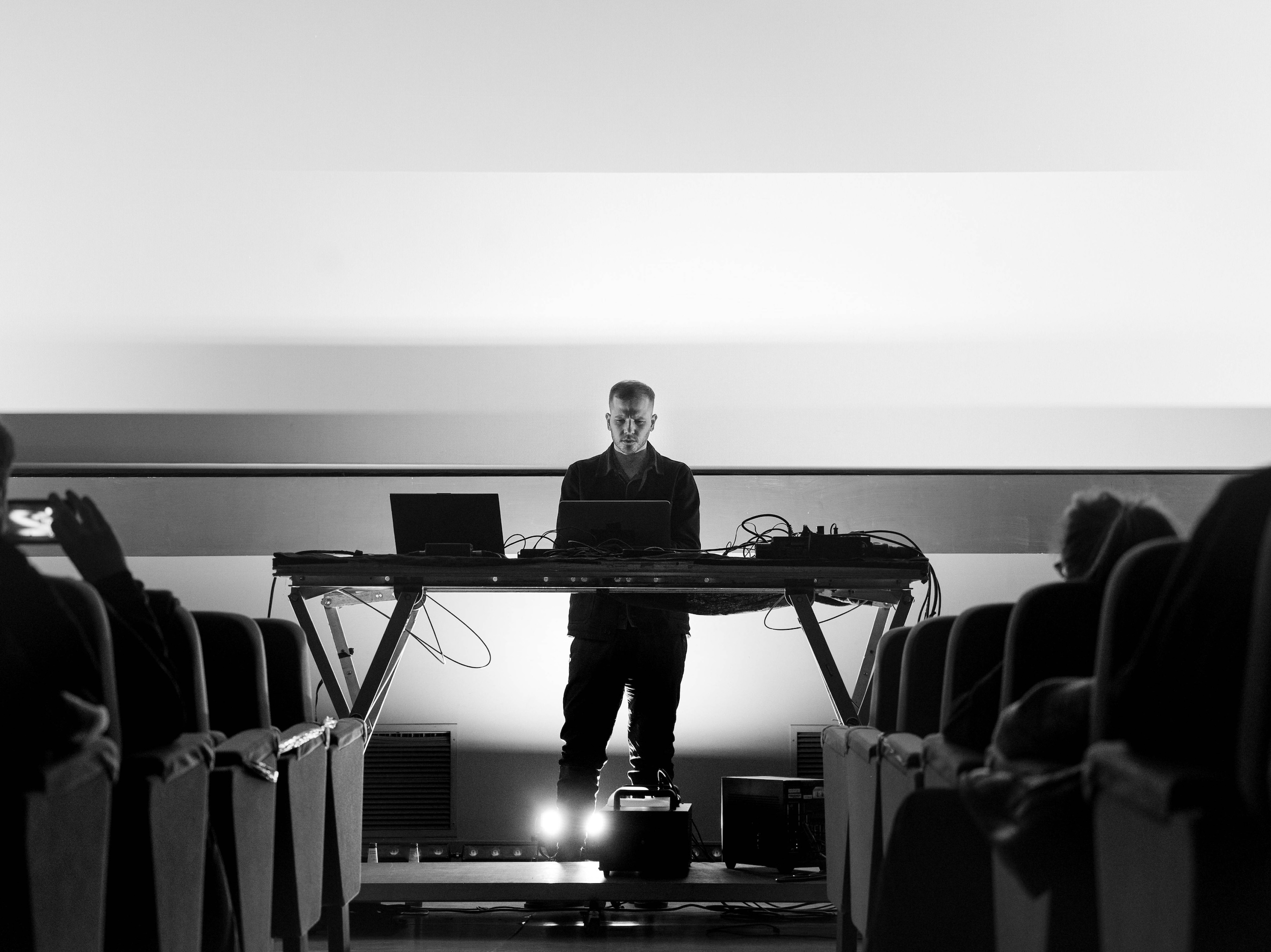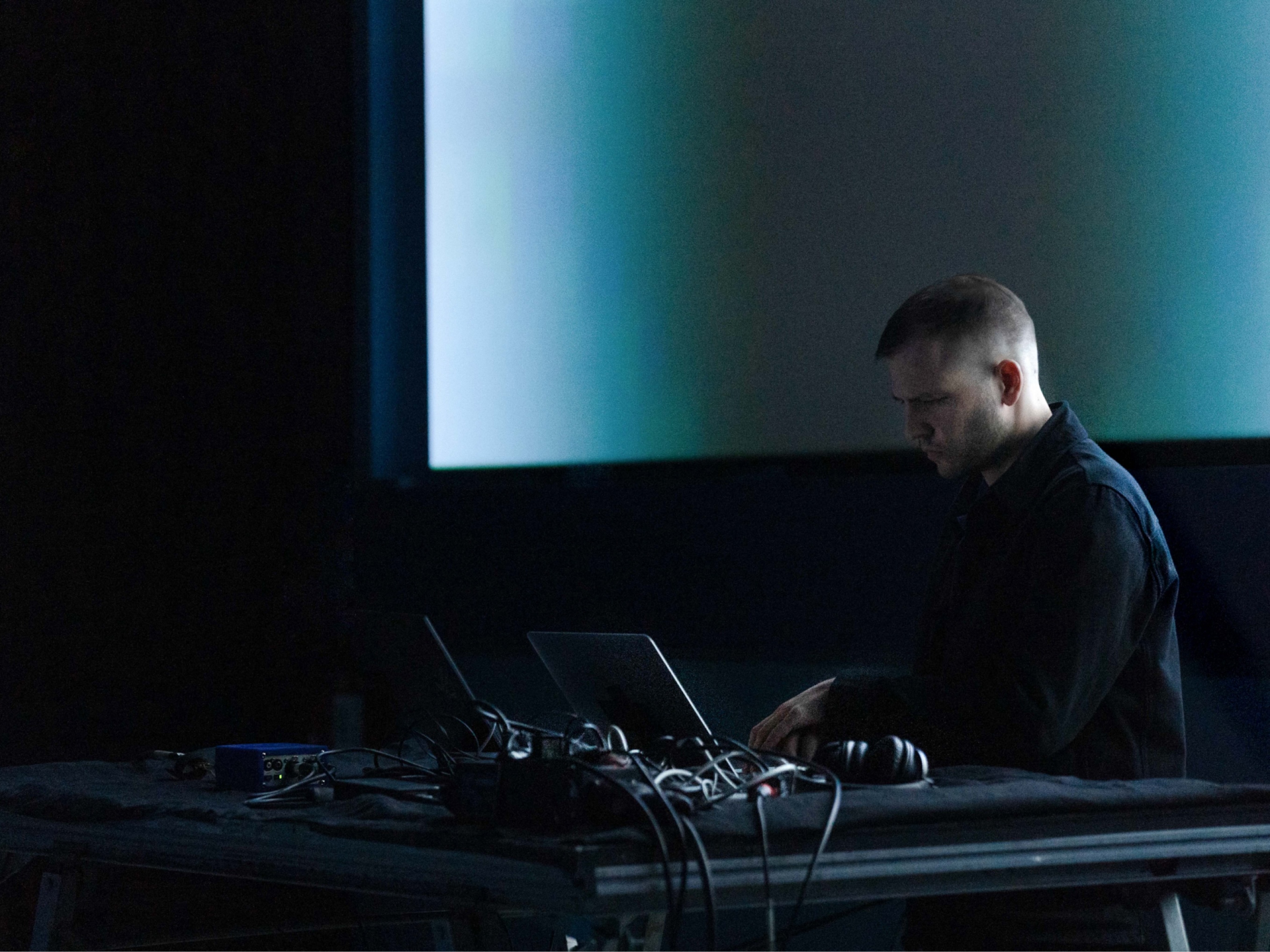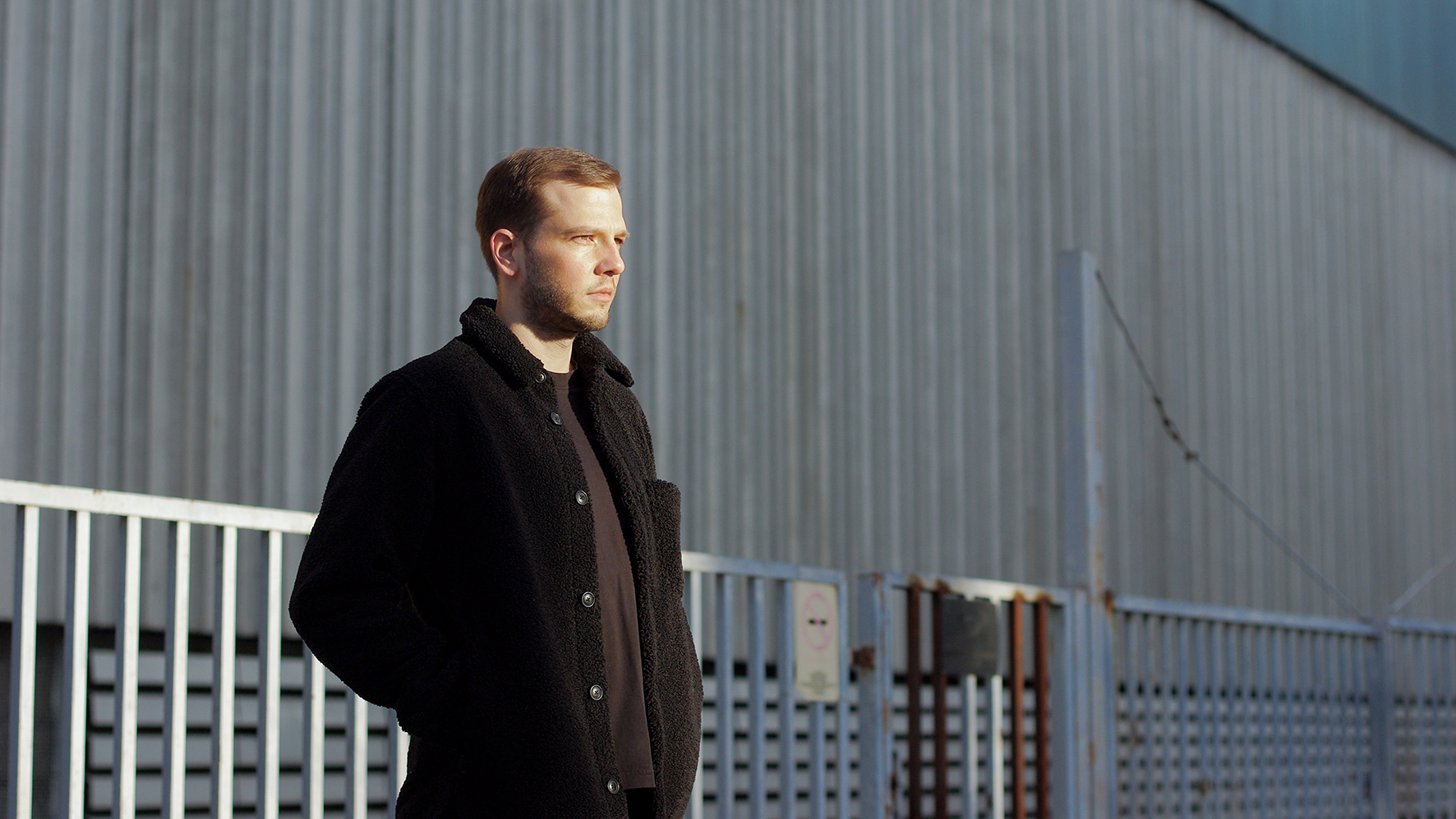“There’s constant hype about the instruments, synths, speakers and computers that producers use - but will your music sound better because of that?”: Gábor Lázár on sound design, generative techniques and designing his own instruments in Max
Hungarian producer Gábor Lázár tells Danny Turner how his 8th album, Reflex, evolves his experimental approach to electronic music-making

With such a diverse array of sophisticated sound design tools available, you’d think that forging a unique tonal palette would never have been easier for electronic producers.
But with more artists experimenting than ever before, it’s becoming increasingly difficult to carve out your own space in electronic music. Hungarian artist Gábor Lázár, however, is perhaps a rare example of a modern-day sound designer that has shaped his own instantly identifiable aesthetic.
Between his debut album I.L.S. (2014) and latest body of work, Reflex, Lázár has spent over a decade using Max to build his own compositional interfaces. Designed to create micro-variations that emit immersive, unique-sounding properties, Reflex finds Lázár’s bizarre chromatic-sounding compositions evolving from the experiential to a more rapid, techno-oriented sound.
When you first started listening to electronic music, were you immediately curious as to how the music was made?
“Going back to my childhood I didn’t really ask myself how the music was made, but thinking out loud I think it’s one of the reasons why electronic music sounds interesting for most people - because it’s abstract and we’re interested in how sounds are being made, organised and created. As a teenager, that began to interest me and I imagined learning how to make music using a computer.
“A friend, who was a little older than me, was already making drum and bass and breakcore, which is a little bit technical and ornamental. With his help, figuring out how to handle rhythm parts and make patterns was a good starting point, and I soon realised that I was actually quite good at it and could make nice beats.”
Growing up, was there a particular album or track that fascinated you in terms of its sound construction?
“I could bring up a couple of examples, but what’s really interesting is that when you figure out how an artist made a sound it’s not all that interesting anymore [laughs]. You might think I’m interested in sound synthesis on that level, but I’m honestly not, I’m more into organising sound and making Max/MSP patches that represent a score or skeleton of the music.
Want all the hottest music and gear news, reviews, deals, features and more, direct to your inbox? Sign up here.
“At some point you realise that there are much deeper levels to that, and when you get to the deepest level you have to start doing complex mathematics and programming tasks that go well beyond Max, which is only an activity for certain types of people.”
Was your debut album, I.L.S., purely about experimentation or did you have a fully formed sound aesthetic in mind?
“At that time, I was a newcomer to Max. I discovered it in 2010 and I.L.S. came out in 2014 so it took me a few years to research and understand how the software worked before trying to create my own digital studio within it. My early albums reflected the recording of the instruments I made in the same way that later albums are representative of my current compositional interface.
“All of them are based on closed systems, which is why my early albums sound a little bit limited. The I.L.S. LP and EP16 were made using additive synthesis – I basically used a synthesiser to create lots of oscillators on top of each other and when you pressed one note it created a rich sound. I was purely focused on the spectral content of the sound.”
Is your intention to create music that makes people think about sound as opposed to reacting to sound physically?
“Back then, I wanted to make something that sounded strange but didn’t connect to or reference anything that was out there, but my latest album, Reflex, has a lot of references to techno, club culture, surrealism and algorithmic or generative music. So I.L.S. was about sound, and anyone who sits down and listens to it can only think about that because there’s no symbolism or melodies, but Reflex is more structured.”

Was the intention to give the album a title that demonstrates that physical relationship between sound and movement?
“It’s a good definition, but I don’t really like titles because they put music in a box and lead the listener towards a specific meaning rather than their own interpretation.
“However, like you said, the title is a metaphor relating to unintentional sensory or physical reactions using dance music as a response to that incoming information. It’s a bit of a childish analogy, but Max/MSP is a system of incoming signals, processes and outgoing messages, which is basically how a synthesiser works.”
Reflex is certainly more uptempo than your previous releases. Is that an example of you attempting to shift from headphone listening to a more club-friendly environment?
“There was no purpose and there’s usually no concept about wanting to make a specific album or thoughts about fighting for an idea. I’d been thinking a lot about going in a different direction and ended up with Reflex, but from beginning to end the album does have a process that moves from home listening to a club context.”
The LP shares a similar tonal palette to your previous work. Is retaining that sound aesthetic something you’re very conscious of?
“When I was a teenager I was making all kinds of sounds and throughout that process I somehow found an identity. As a musician, I still find it interesting that I can find new variations using the same compositional interface, synthesisers and the same few patches yet create different styles within that same aesthetic framework.”
Having created a sound that you can call your own, you don’t feel restricted by that framework or apprehensive about moving away from it?
“If you listen to my early albums and then listen to Unfold, Source or Boundary Object, they are quite far away from each other. For instance, Unfold is a club album but it’s not functional club music and Boundary Object is not even musical - it’s more like media.
“As an artist, it’s great to be conscious of or have a clear idea about what you want to do, but I don’t think it’s very interesting to have a goal to make a specific type of album. For me, the interesting part of making music is discovering something intuitively on a similar level to what you want to do, and if you use the right tools in the right way you can explore that within a certain aesthetic framework and create a new version of it.”

Is there more complexity behind Reflex compared to your previous releases?
“It took a little bit longer than usual because I wasn’t actually executing an idea but more interested in taking a journey to find something that was interesting and enjoyable. I used the same Max/MSP patch for Reflex as I did Boundary Object, which was a much simpler album with less sounds. Reflex has a lot more content and variety, but the process was no more complicated once I’d realised the direction I wanted to take.”
Is the creative process more intuitive than one might imagine taking into account your technical reliance on using Max as a creative platform?
“It’s intuitive in that I’m not trying to fit into a box. I try to find interesting patterns and organise the sound of drums and synths in a way that’s rhythmically off-grid or out of the box without being so deconstructive that people cannot connect to it.
“When I have a sketch of patterns or sequences, I try to organise them and inevitably create a kind of narrative, but you could say that there’s a micro and macro level to my music. On the micro level, I try to find interesting, non-colonised generic patterns and on the macro level I’m looking to create a structure that brings the sound back to a common ground that people can understand. While I want them to step out of their comfort zone, I don’t want to lose their attention.”
Max/MSP is clearly vital to your production process. By definition, does the software allow you the space to evolve?
“I’ve used all the commercially available software, from Reason to Cubase and Logic, and have been using Max/MSP for 15 years, but in the last couple Max has been literally the only thing I use. Of course, I’m using VST synthesisers within Max, but what I really like about it is that I can create an environment where I’m not creating tracks but instruments, and using those instruments to create tracks and albums.
“That’s a whole different approach to music making because if you use Logic, Cubase or Ableton, every time you sit down you start from scratch, begin by making a beat and then build up a track until you finish it and start all over again. Max/MSP is more like going to a workshop or laboratory and it’s amazing to be able to create your own tools and work with them. It’s not just for music either; I’m using it for multimedia installations and all sorts of creative activities.”
The word ‘generative’ gets a bad rap from people who assume the user is not in control of the creative process. To what extent is your music generative and what’s your viewpoint on generative music in general?
“I’m not using generative tools, I’m using generative techniques. Humans cannot be excluded from the process of making music and the Max/MSP patches and modules I build are really simple. The complexity is created when the process starts to create overlapping layers. If you listen to my music, 90% of it is my personality and 10% is based on generative tricks, but I’m not even fully sure what generative music is – I prefer to call it algorithmic music.
“There are two perspectives in operation here. One is how the music is made and the other is how the music sounds, which is the aesthetic part of it. How a pattern is made can be answered technically, but if you listen to the album you hear an aesthetic message statement, and that’s 80% of the music. I get the feeling that people who question generative music are not really feeling the aesthetic part.”
The generative conversation is now strongly tied to the rapidly unfolding use of AI in music production. Does this hold any interest for you?
“It’s a common question these days, but I don’t really have enough information about the technology to understand how it’s working. I’m more interested in the social consequences of AI and how it’s going to be used there. People can write music on a computer by writing a message that says ‘I want to make music like this’, but using AI to make music because you’re too lazy is a joke.
“I hope the next generation of producers is not some 15-year-old guy sitting at home subscribing to AI software to create shit in 10 minutes without even knowing what it’s about. We don’t actually need more music; we need less because so many people are doing it. That’s nice, but most of it is trash.”
Another technology used in music production that has been perceived as a gimmick is Dolby Atmos. However, is Atmos appealing for a producer who has more of a world-building aesthetic?
“I’ve never thought about Dolby or 5.1 systems. I like the stereo system and it could be nice to release something in Dolby Atmos, but I’m afraid that not many people have that sort of system at home. I like to make music that sounds nice on any speaker system, not necessarily the most expensive or professional setup.
“There is constant hype about the instruments, synths, speakers and computers that producers use, but will your music sound better because of that? Quality doesn’t always make a big difference. You can buy a cheap bottle of wine, and a more expensive bottle could be better, but when you buy one that’s five times more expensive the improvement is rarely proportional, and I think it’s the same for music gear.”
Is it possible to translate an album like Reflex in a live setting without being reliant on pre-recorded elements?
“It’s a good question, but my live performances are actually completely live as I’m using the same compositional interface and Max/MSP patches on-stage as I’m using in the studio. All of the sequences, patterns and loops are saved as presets and when I play tracks I’m playing drum samples and synths in the same way that I do in the studio, which is almost 100% live. The only things that are pre-recorded are the 10 short drum sounds in my sampler, but everything else is generated in real-time so I have the freedom to do whatever I want.
The only things that are pre-recorded are the 10 short drum sounds in my sampler -everything else is generated in real-time
“Of course, I want people to recognise a track from the album, but once they do I can start to bring more variations to the track itself and end up somewhere else. A few weeks ago, I played live in Santa Cruz de Tenerife, recorded the show from the mixer and when I got home realised that I’d played 10 minutes of variations of original patterns, which was like making a new track.”
You also mentioned there being a visual component to your use of Max. Does that create surprising visual interpretations of your music?
“The visuals are coded in C++ by a friend of mine who’s really good at programming. I asked him to create a framework for what I wanted to see based on certain parameters, so I created a separate Max patch that receives information from other Max-based compositional synths and sources.
“It processes and forwards the messages to the C++ framework to generate visuals and the stage lighting is also controlled by Max, so it’s like a multimedia installation based on real-time generated sound, stage lighting and visuals. In the 2010s, a lot of electronic musicians used a screen to create projections during a show, but that’s not very trendy now because artists are performing more.”
Is that representative of the on-going struggle that some electronic artists seem to have in presenting themselves?
“Whether you’re playing in a band or solo with a computer, it’s a different culture and I think we should be proud of whatever that’s about. If you feel that you’re not cool enough to stand on stage because you don’t have a guitar or play drums, then you are not honest and should maybe stop what you’re doing. I like to be there alone with the computer and enjoy the fact that it may look strange.
“Electronic music has been around since the ‘50s, but if you talk to your wider family it probably still feels like a relatively new technology and vocabulary to them, and seeing one person on stage with a computer is part of that. When people go to a club, most people are facing the DJ and everybody is dancing towards them. Maybe it would be more interesting to make a sound system that is all around the crowd and remove the DJ from the room and see what that looks like!”
Gábor Lázár’s new album, Reflex, is out now on Raster.
